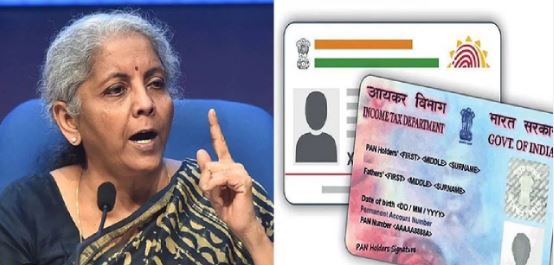EPF (Employee Provident Fund): A Complete Guide
Table of Contents
Introduction:
The Employee Provident Fund is a tax-saving plan in India designed to assist salaried individuals in saving for retirement through employer contributions. It offers a retirement benefit to salaried workers, ensuring financial security for daily expenses and maintaining their lifestyle even after retirement.
Employee Provident Fund:
The Employee Provident Fund is a savings scheme in India, overseen by the Central Board of Trustees and managed by the Employees’ Provident Fund Organization It serves to encourage post-retirement savings for employees nationwide. Both employers and employees contribute 12% of the employee’s basic wage monthly to the fund, which is later disbursed to the retiree as a lump sum with interest. The calculates the return on investment, and the claim is tax-free, making it a low-risk investment overseen by the Indian Government.
Each company registered with the assigns a Provident Fund (PF) account number to its employees, generated by a numerical code. This number signifies the location, state, regional office, and member code of the PF, managed by the PF trust. Additionally, PF members are allocated a unique Universal Account Number (UAN). While an individual’s PF account number changes when switching jobs, the UAN remains constant.
Eligibility:
To qualify for the EPF scheme, the employee must be an active member of the organization, eligible for insurance, Provident Fund, and pension benefits. Organizations with a minimum of 20 employees qualify for benefits. Employees earning less than Rs. 15,000 must be registered in every month., while those earning over INR 15,000 can open an account with prior approval from the Assistant PF Commissioner.
Advantages :
EPF offers a wide range of advantages, some of which include:
- Individuals investing in the EPF system can avail tax breaks under Section 80C of the Income Tax Act. You are eligible for a tax deduction of up to Rs. 1.5 lakh for contributions
- In case of an emergency, you can access your funds by submitting a withdrawal request, allowing you to withdraw up to 90% of your corpus in accordance with the partial withdrawal rule.
- Upon obtaining the Universal Account Number (UAN), your employees can conveniently access their pension fund account through the EPF member portal, enabling them to transfer their accounts whenever they change jobs.
- The Employees’ Provident Fund is a government-supported program that ensures a guaranteed rate of return. Annually, the government reassesses and announces the interest rates applicable to EPF contributions, providing you with secure and insured profits, eliminating concerns about market fluctuations.
- The primary objective of EPF is to accumulate funds for your retirement. Upon reaching retirement age at 58 years old, you can withdraw your entire corpus to finance your retirement. Additionally, you have the option to apply for a monthly pension using Form 10D.
- The employer makes the necessary contributions to both the employee’s pension plan and their personal retirement account (PF), which the employee can access upon retirement.
- This act mandates an organization’s employer to contribute to the life insurance of an employee, but it does not include provisions for a group insurance policy. The plan ensures that all employees are sufficiently covered by insurance.
- Interest credited to an individual’s Provident Fund account remains tax-free as long as they are employed. However, after retirement, the interest credited to the employee’s EPF account becomes taxable and must be declared as “Income from other sources” on the tax return. The current interest rate on deposits is 8.15% and the same rate is applicable on VPF deposits… The interest rate on the is reviewed annually.
Rules to withdrawal EPF:
- The entire sum becomes accessible for withdrawal upon reaching the retirement age of 58 years.
- A complete withdrawal is permitted in the event of resignation after being unemployed for more than two years. However, the withdrawn amount incurs taxation if accessed before the five-year mark.
- At the age of 57 years, up to 90% of the amount can be withdrawn.
Tax on Withdrawal:
- EPF withdrawals are typically tax-free, except when the employer’s contribution has not been made for at least five years, in which case the exemption is based on the number of months contributions have been made.
- Premature withdrawal of may render the balance taxable, with 10% of the total balance being deducted. Additionally, if the employer fails to provide or furnish the PAN, a 30% tax will be deducted. It’s important to note that tax deductions and tax liability are distinct, so higher slab rates may result in higher tax payments.
- If the total income tax liability is less than 10%, it is possible to get a refund of tax deducted on withdrawal. Furthermore, employer contributions and interest will be taxable under “Salaries,” while employee contributions and interest will be taxed under “Income from other Sources.”
- Lastly, if no deduction was claimed under Section 80C, only the interest on the contribution portion is taxed.
EPF FORMS:
EPF Forms serve as the primary method for members to communicate with with each form designated for a specific purpose.
- Form 5 is utilized for the registration of new employees for and EPS.
- Form 5 (IF) is utilized to file a claim in accordance with the EDLI Scheme.
- Form 10C is employed to claim withdrawal benefits or obtain a Scheme certificate for EPS. It is applicable for members who have not yet completed 10 years of eligible service.
- Form 10D is utilized to claim monthly pension benefits and is applicable for members who have completed the required 10 years of eligible service.
- Form 11 is employed for the automatic transfer of EPF in the event of changing jobs. The UAN number remains unchanged, with only the EPF amount being transferred to a new account.
- Form 13 is used to transfer EPF accounts, serving as the necessary application to transfer funds from an old EPF account to a new one.
- Form 14 is utilized for making premium payments for LIC policies directly from your EPF account.
- Form 15G is submitted by members to avail tax savings on their earned income, while senior citizens are required to fill out Form 15H instead of 15G.
- Form 19 enables members to claim the final settlement of their old EPF account, which can be done either online or offline by filling out the form.
- Form 20 is utilized for the final settlement of EPF in the unfortunate event of an employee’s demise.
- Form 31 is employed for partial withdrawals from an EPF account, adhering to the withdrawal rules outlined in the preceding section.
- Form 2 is utilized for declaring and nominating beneficiaries for both EPF and EPS. It is mandatory to complete this form following an employee’s marriage.




